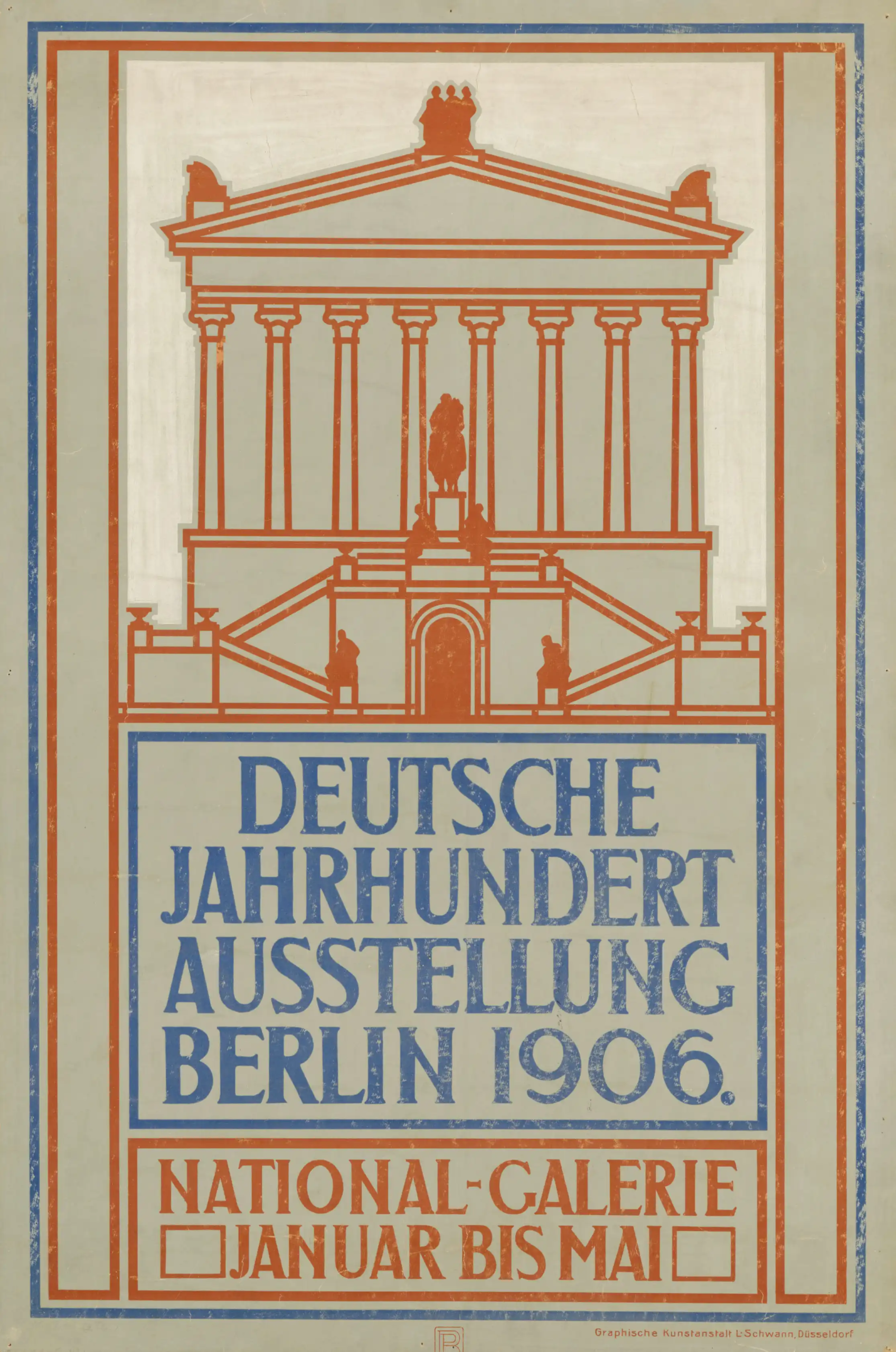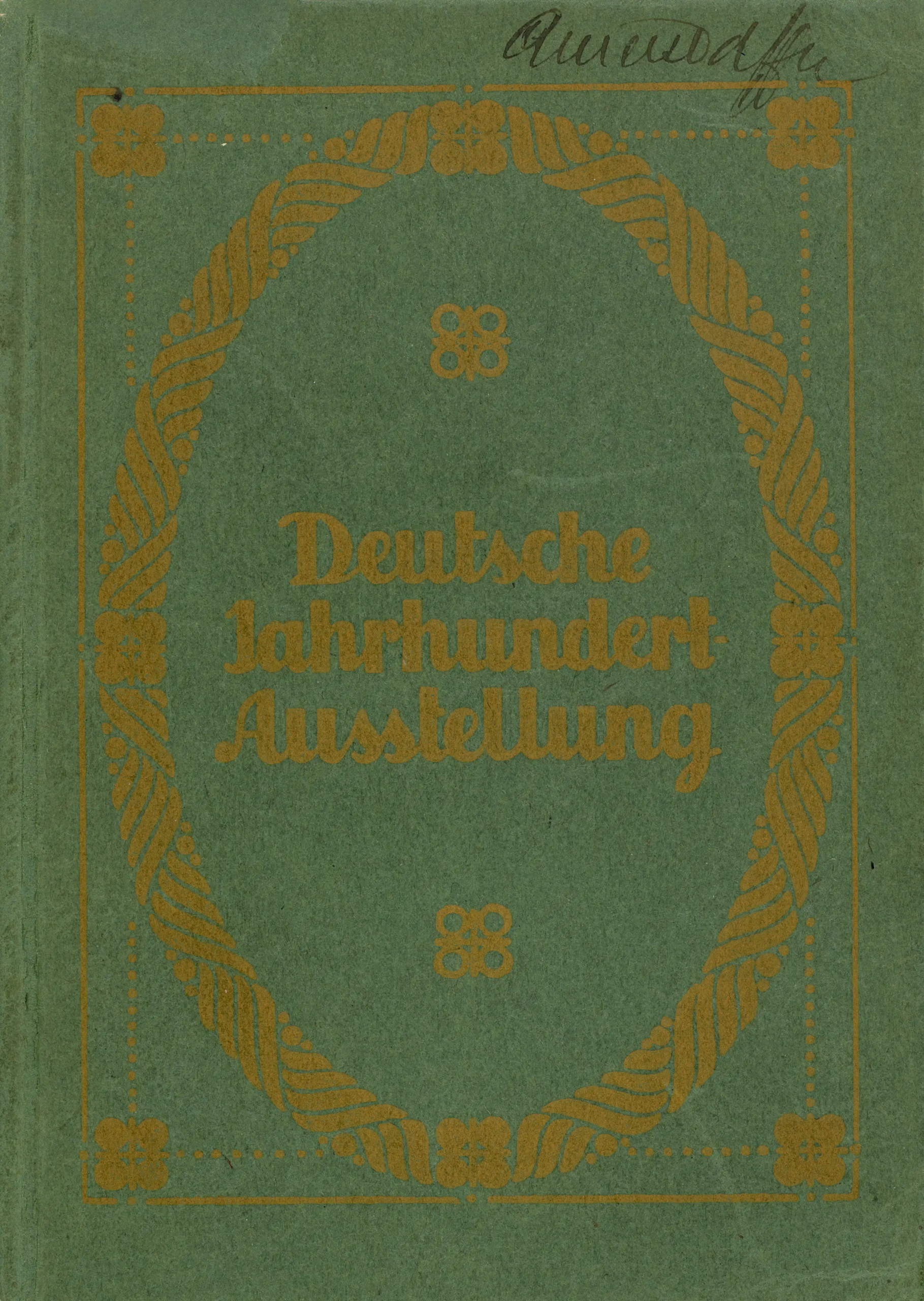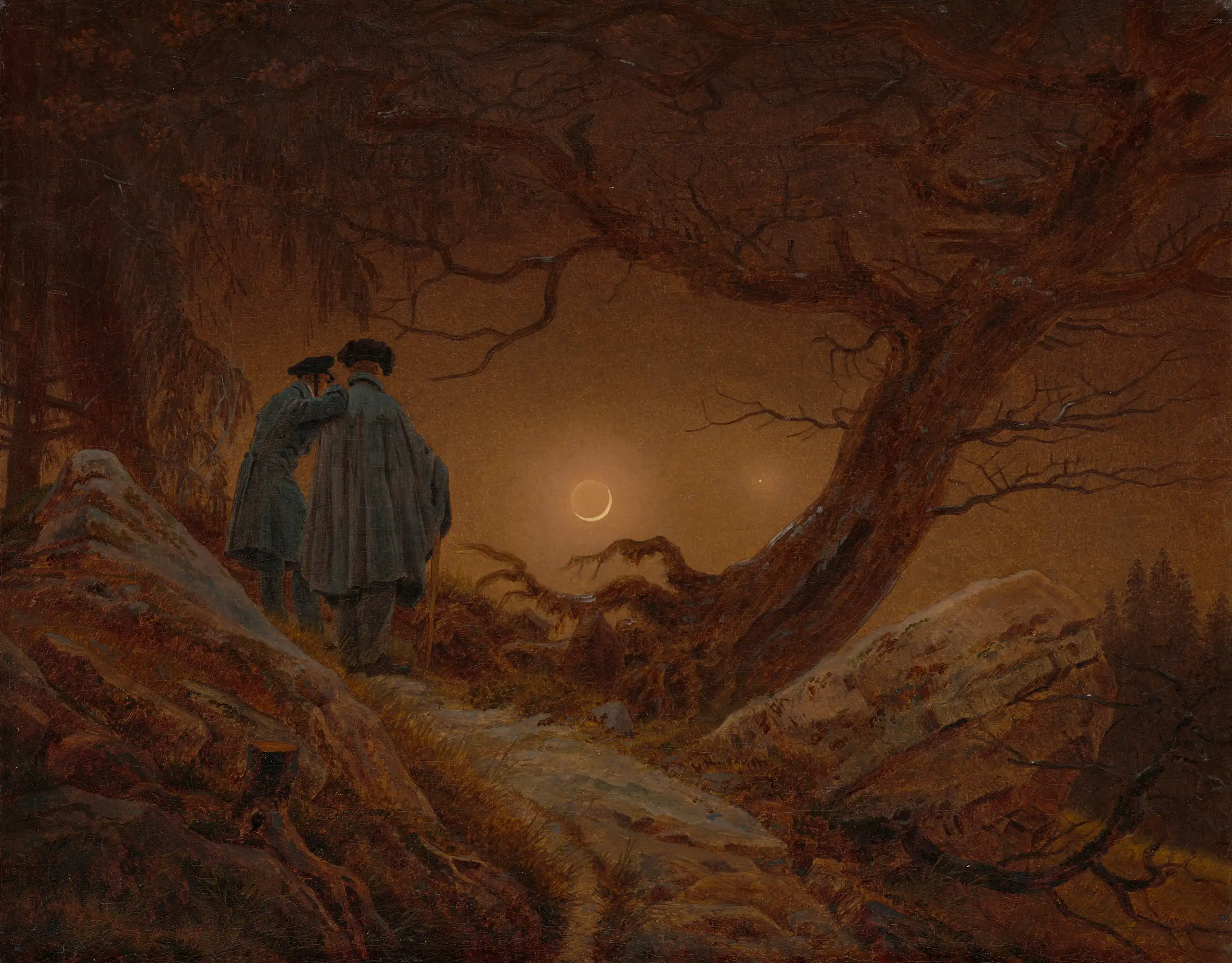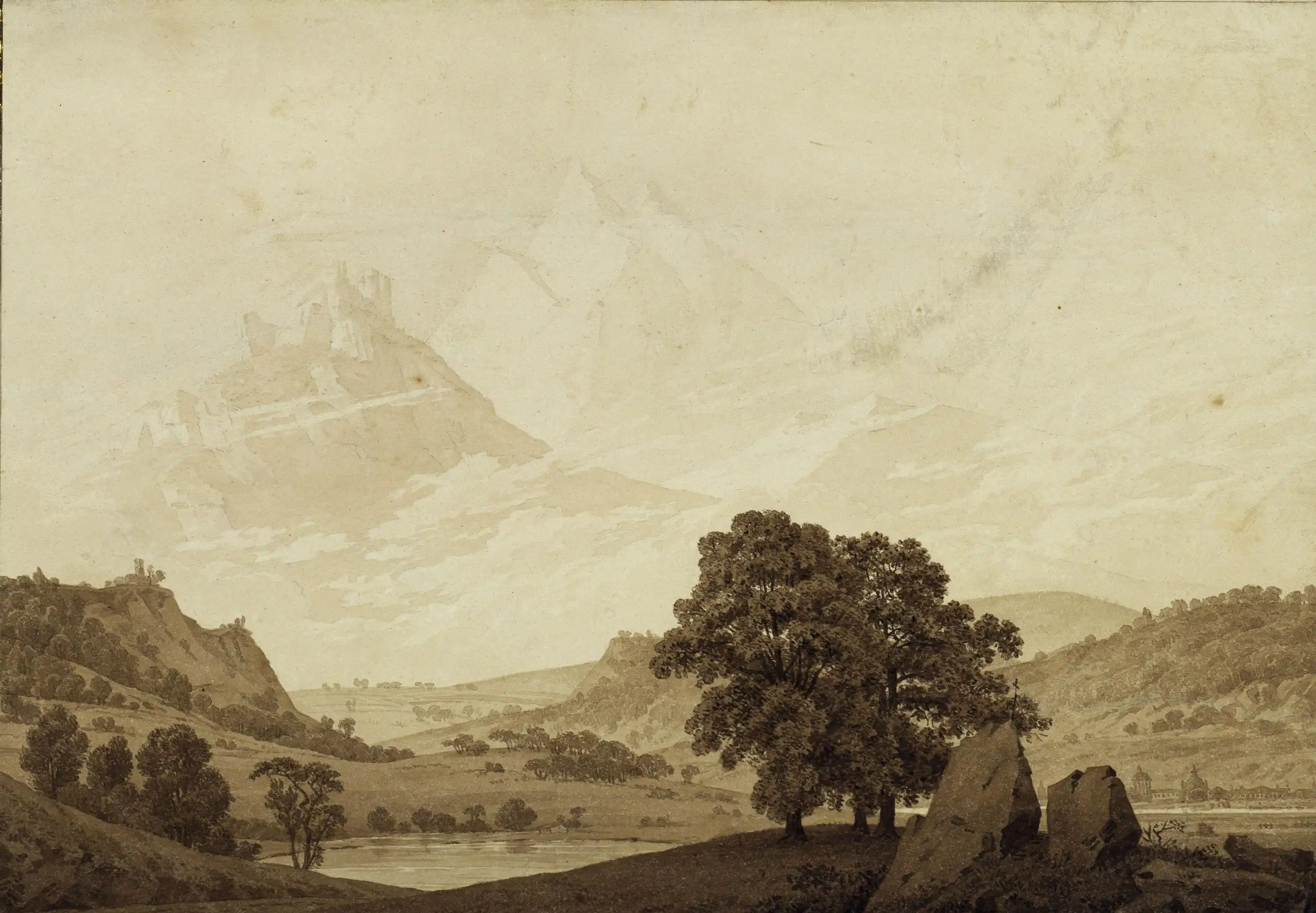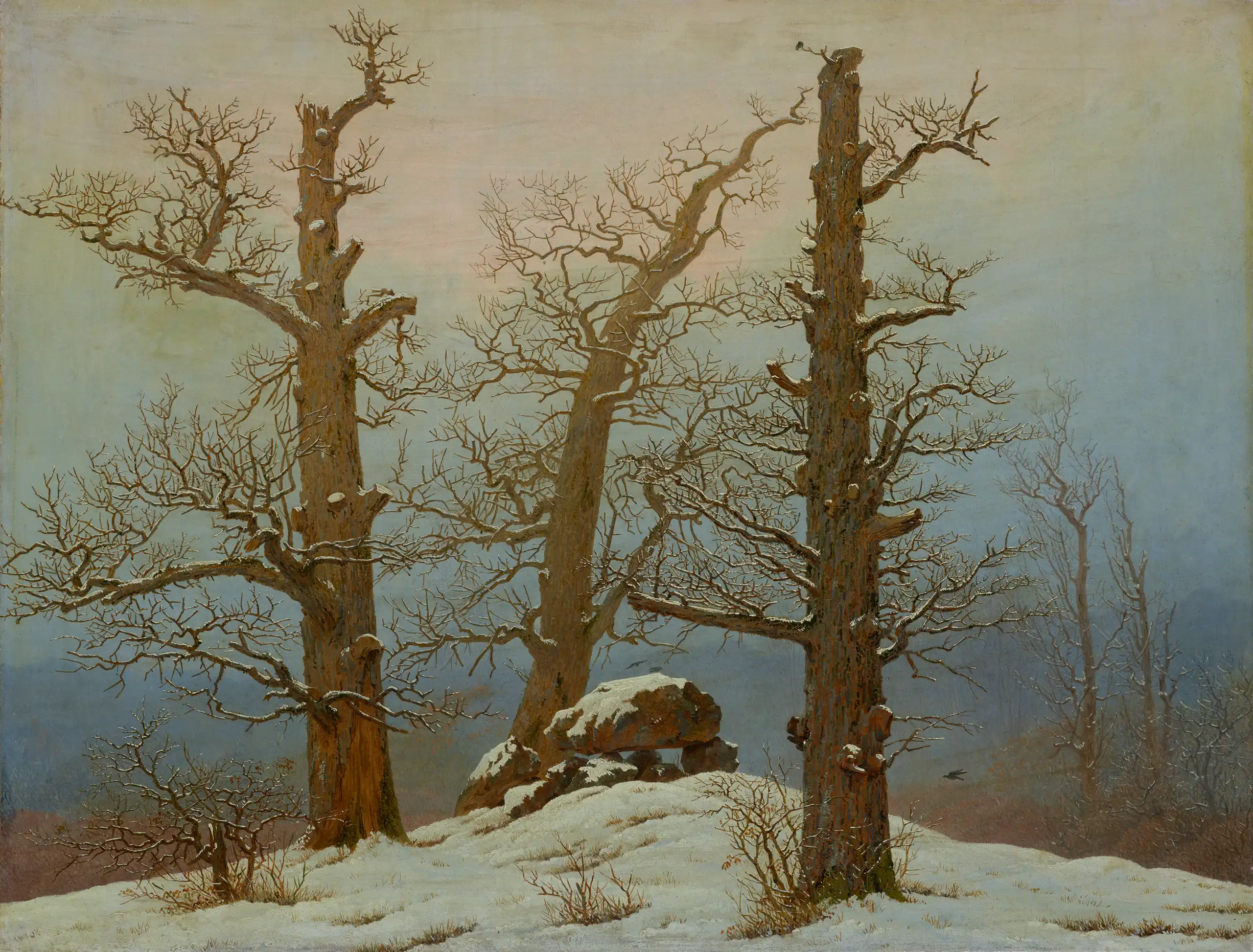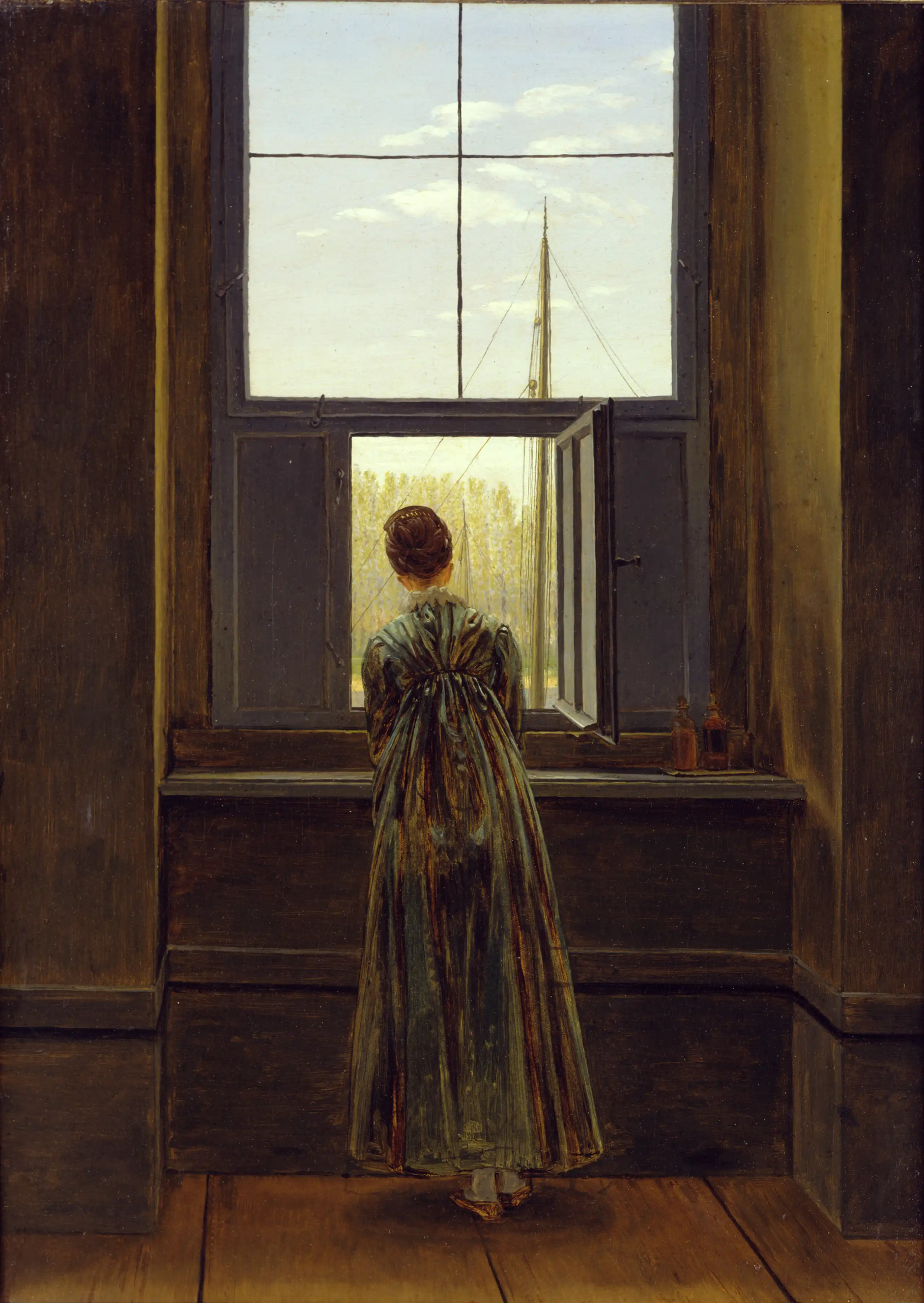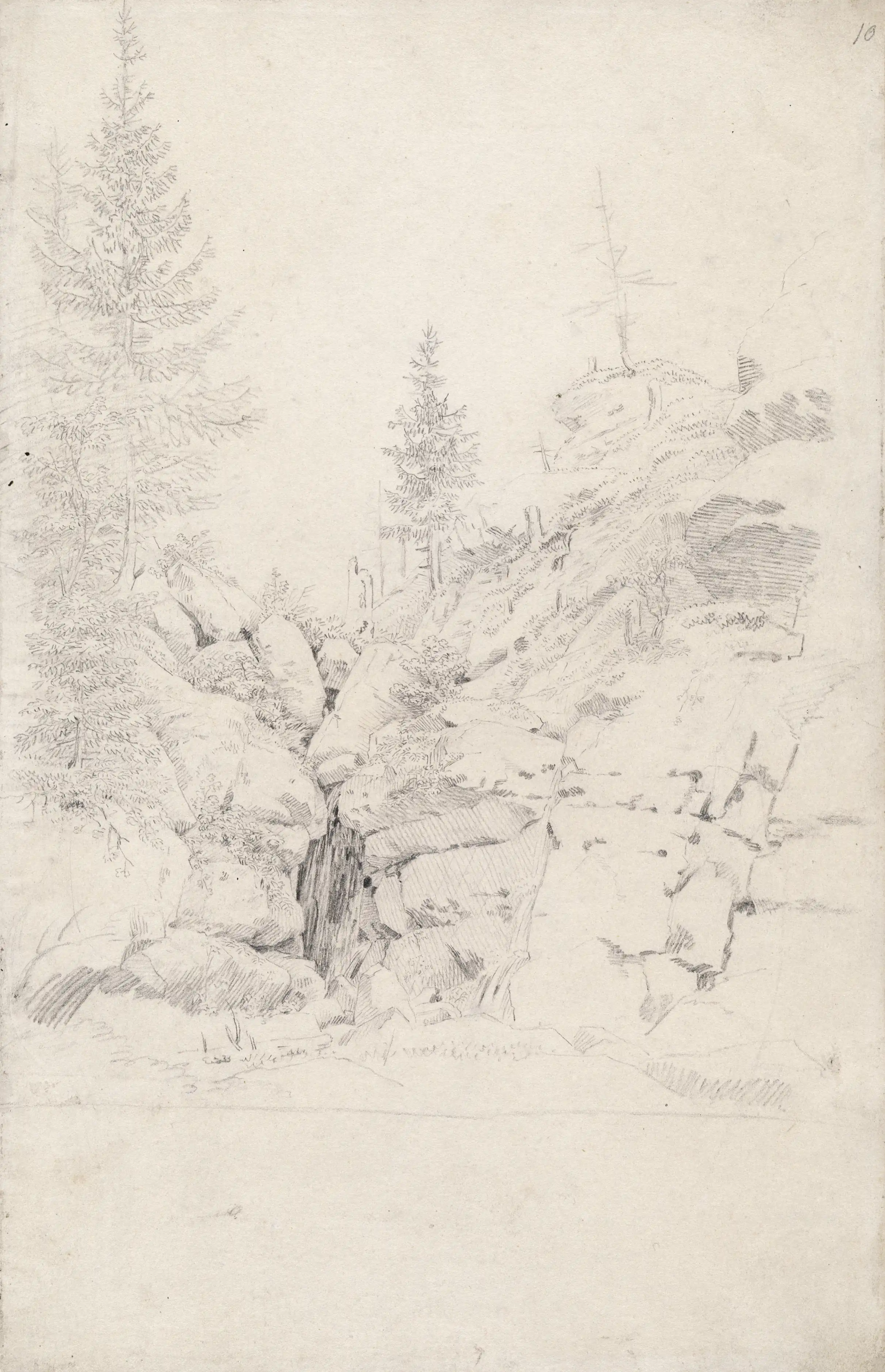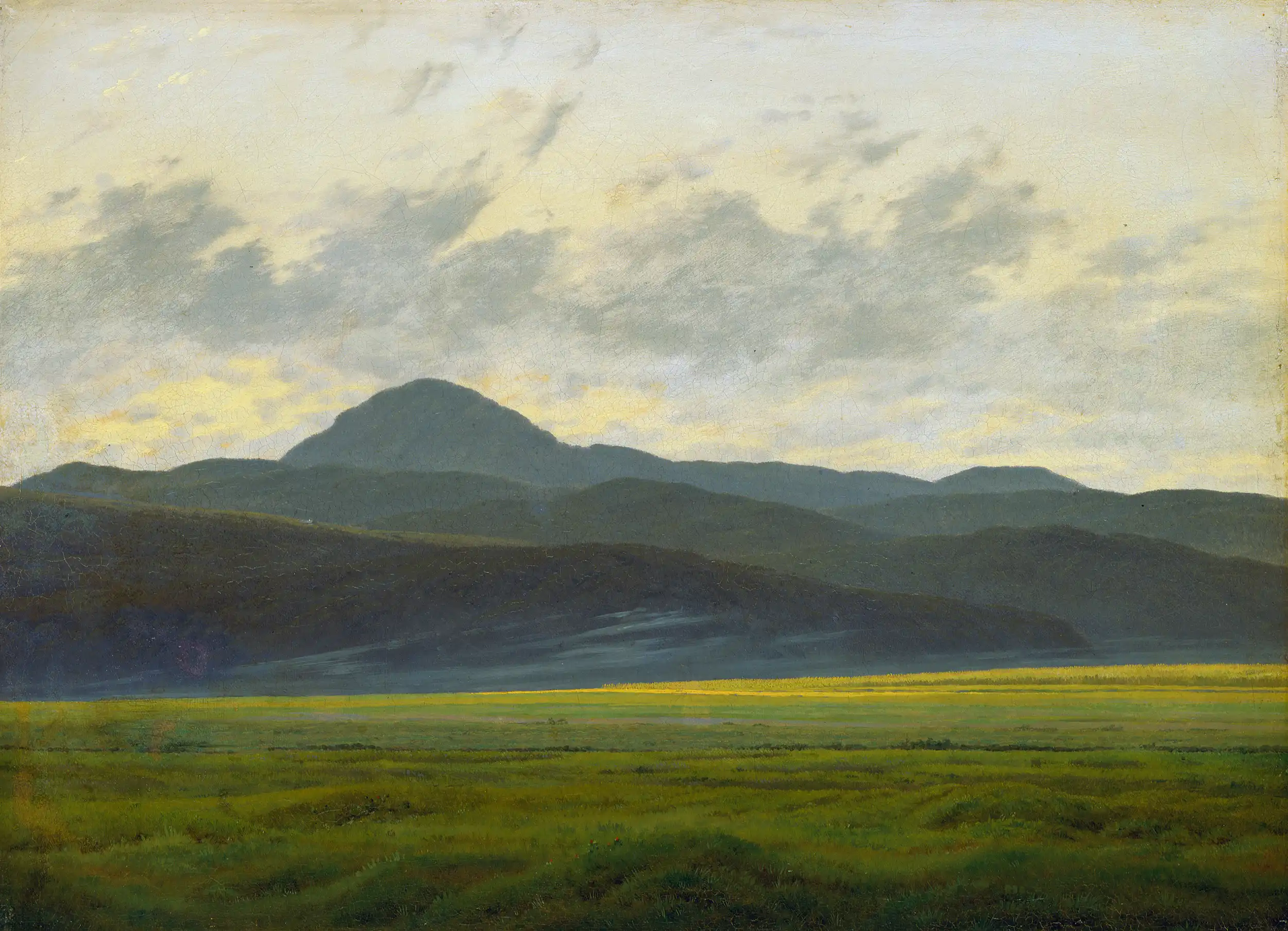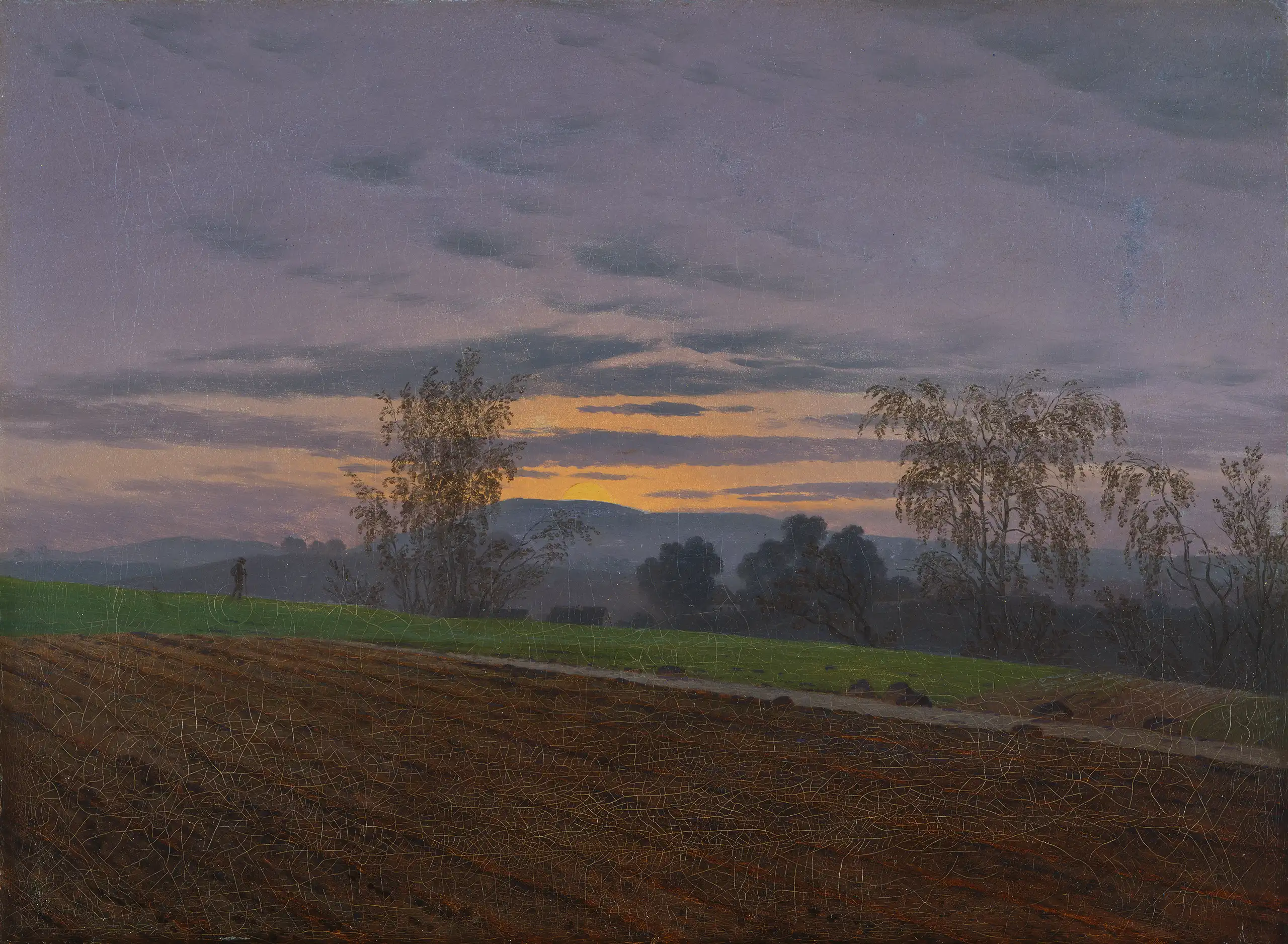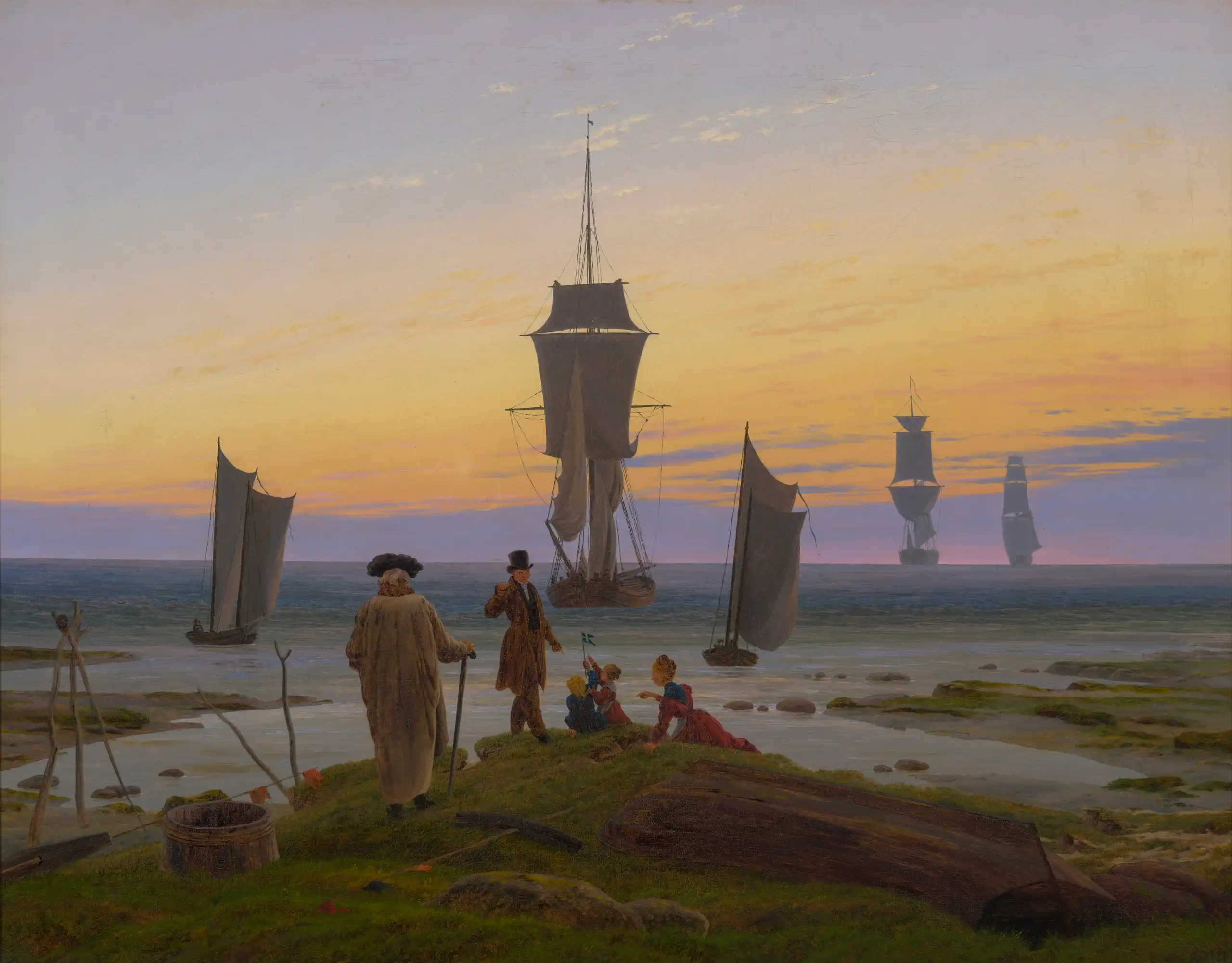Caspar David Friedrich and the German Centenary Exhibition of 1906
What is modern?

1 Friedrich through the Lens of Modern Art The Solitary Tree
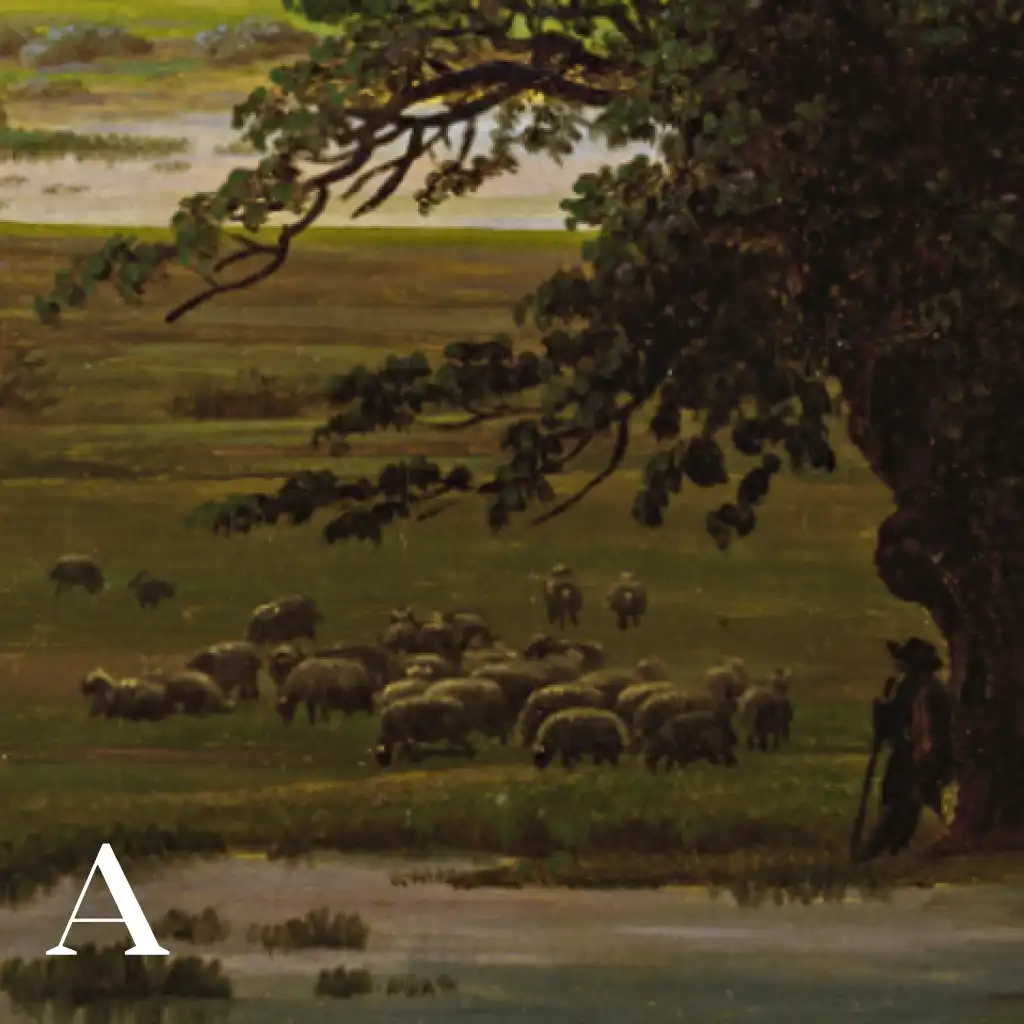
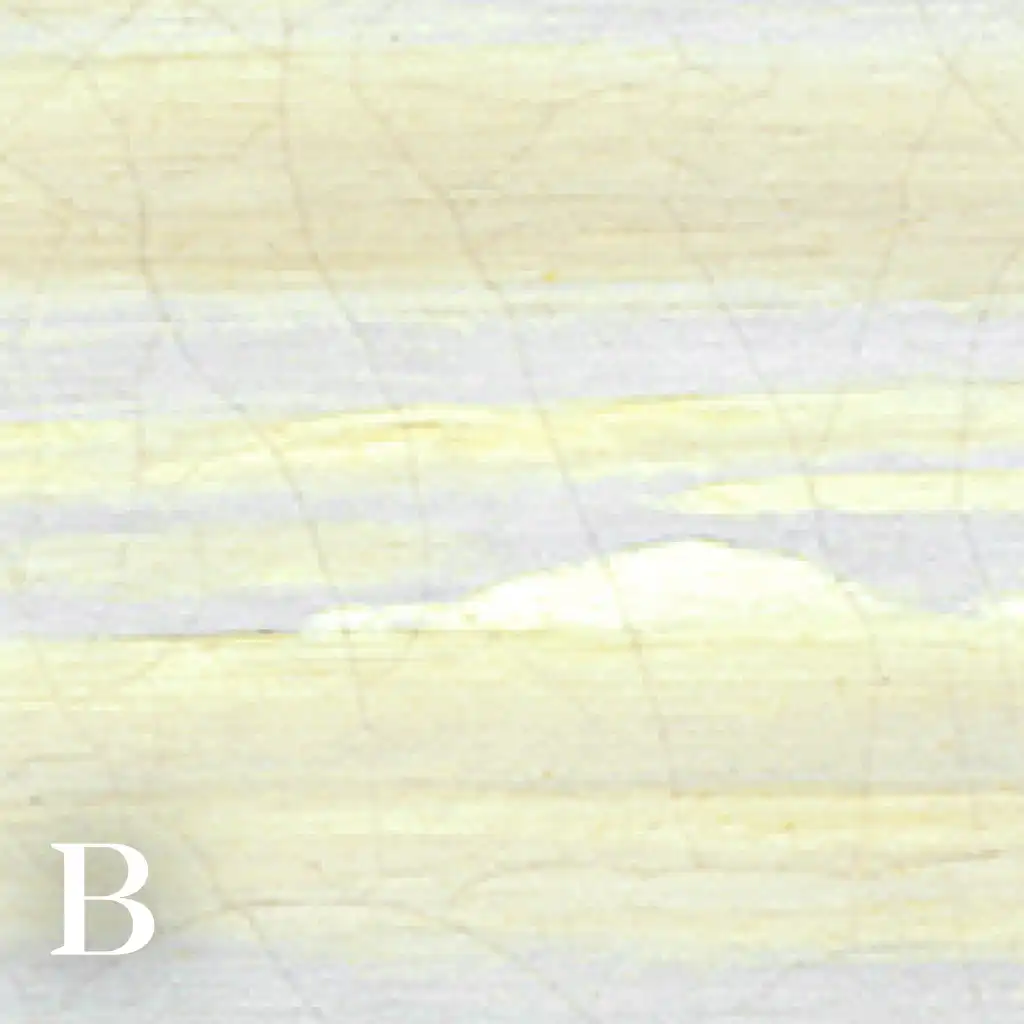

Couldn’t A exemplify the narrative details of Dutch painting, B the radicality of Color Field Painting, and C the lightness of Impressionism? “Could” –, in reality they are all equally modern! In fact, figures A, B, and C are from the same painting:
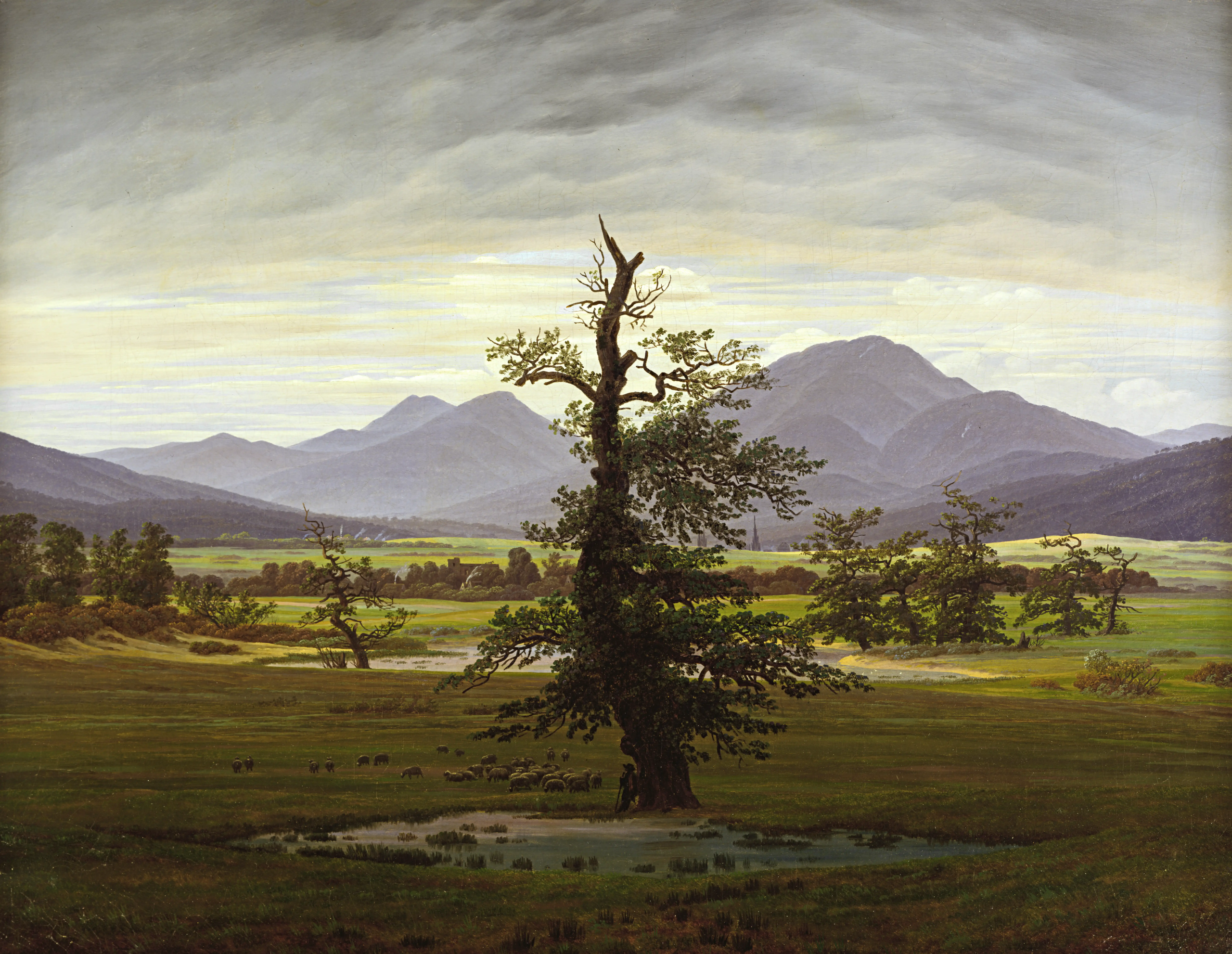
Friedrich’s The Solitary Tree was commissioned by the Berlin banker Joachim H.W. Wagener, who requested a pair of pictures on the theme of the Times of Day. Alluding to medieval panel painting, it is also referred to as a diptych.
Only a juxtaposition of the two pictures reveals their actual content: The Solitary Tree radiates the pristine freshness of an early morning, while Moonrise over the Sea is suffused with the solemn stillness of a day that is drawing to a close. In these pictures, the landscape becomes the bearer of (subjective) impressions and emotions.
During Friedrich’s lifetime, his approach – based on a Romantic theory of art – was radically modern. One potent influence was his friend, the artist Philipp Otto Runge. According to Runge, abstract concepts such as “God” or “freedom” could no longer be represented via clearly legible imagery – allegorical figures, for example. Instead, landscape painting – regarded up to that point as secondary – should be used to restore the unity of man with nature and convey subjective emotions.
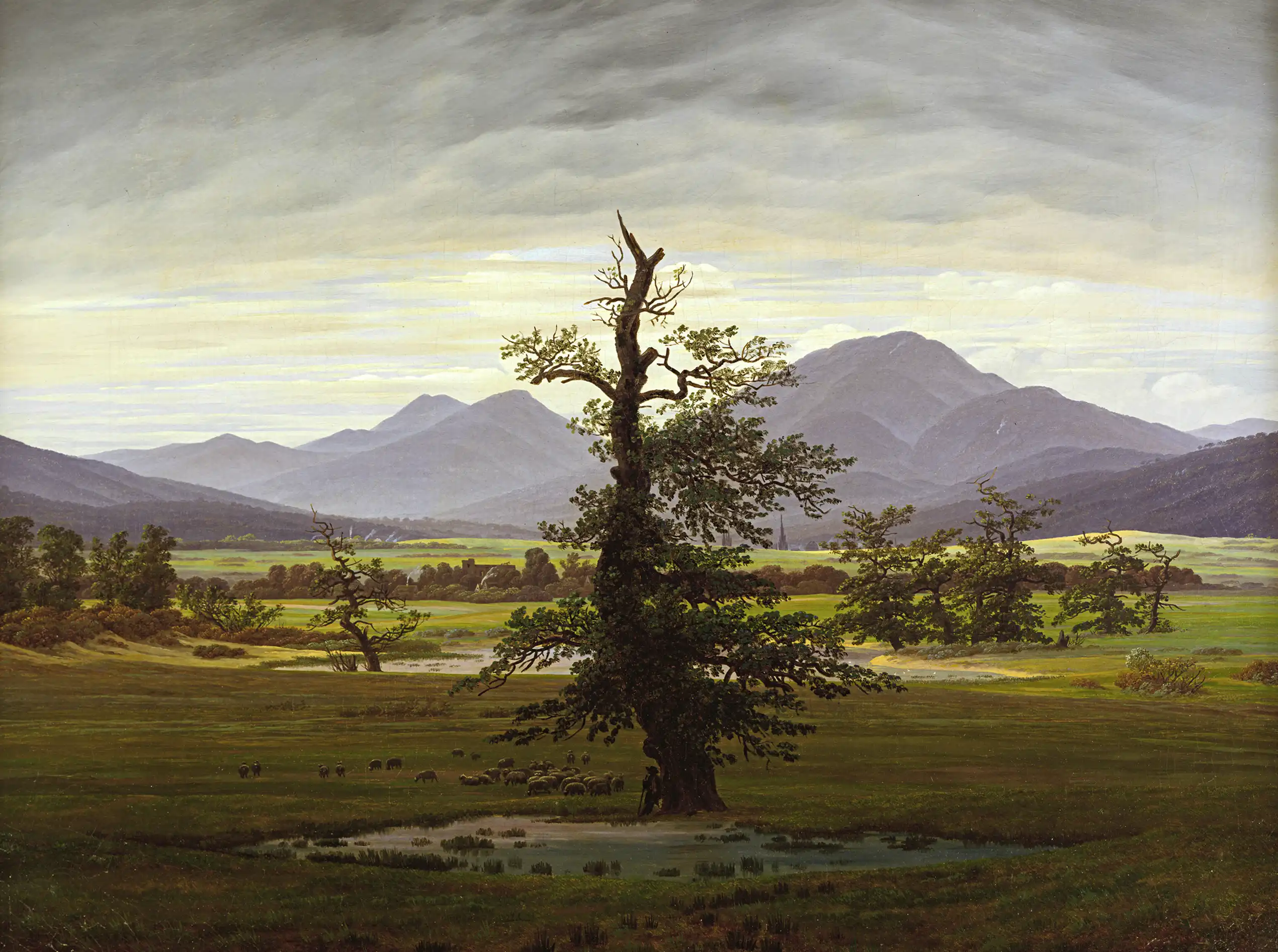

Caspar David Friedrich was quickly forgotten after his death in 1840. But the turn of the 20th century saw significant change – in art generally, and in the public perception of Friedrich’s legacy. Emerging now was a radically new kind of art.
This new art sought to overcome the prevailing illustrative and illusionistic approach to painting while exploring different principles of color and form. Today, this new, modern art is broadly known as Modernism.
In this climate of artistic renewal, Friedrich was perceived as modern – although his art was nearly a century old
At that time, Friedrich was “rediscovered” – at the Jahrhundertausstellung deutscher Kunst (1775–1875) (German Centenary Exhibition) at the Nationalgalerie (National Gallery of Art) in Berlin. Although excluding contemporary art, the exhibition sought to explain, enhance, and popularize the art of the present moment – especially Impressionism – by tracing its origins and evolution in recent art history.
2 Friedrich the Modernist I Observing Nature
In 1906, art lovers, critics, and curators were impressed in particular by Friedrich’s view of nature, and by the use of light and color in his paintings.
After visiting the exhibition in 1906, the art historian Ferdinand Laban wrote about Friedrich:
“He did not view nature through the eyes of an old master. […] Here, you breathe the air of reality.”
Unquestionably, the “reality” we encounter in Friedrich’s pictures is partially the result of his habit of frequent sketching from nature – when he would translate his observations directly into his drawings. Friedrich also used such drawings from nature in the painting The Solitary Tree.
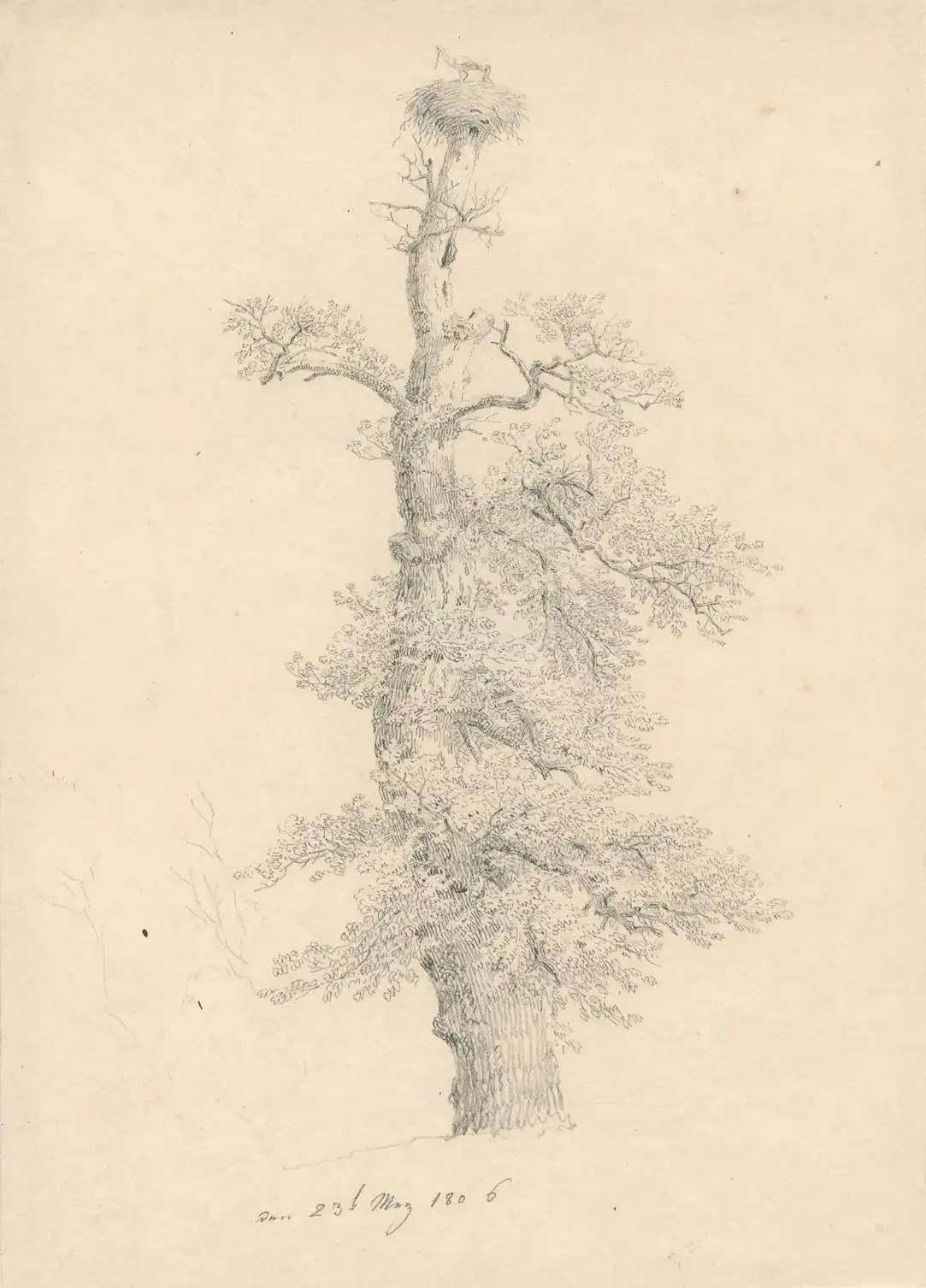
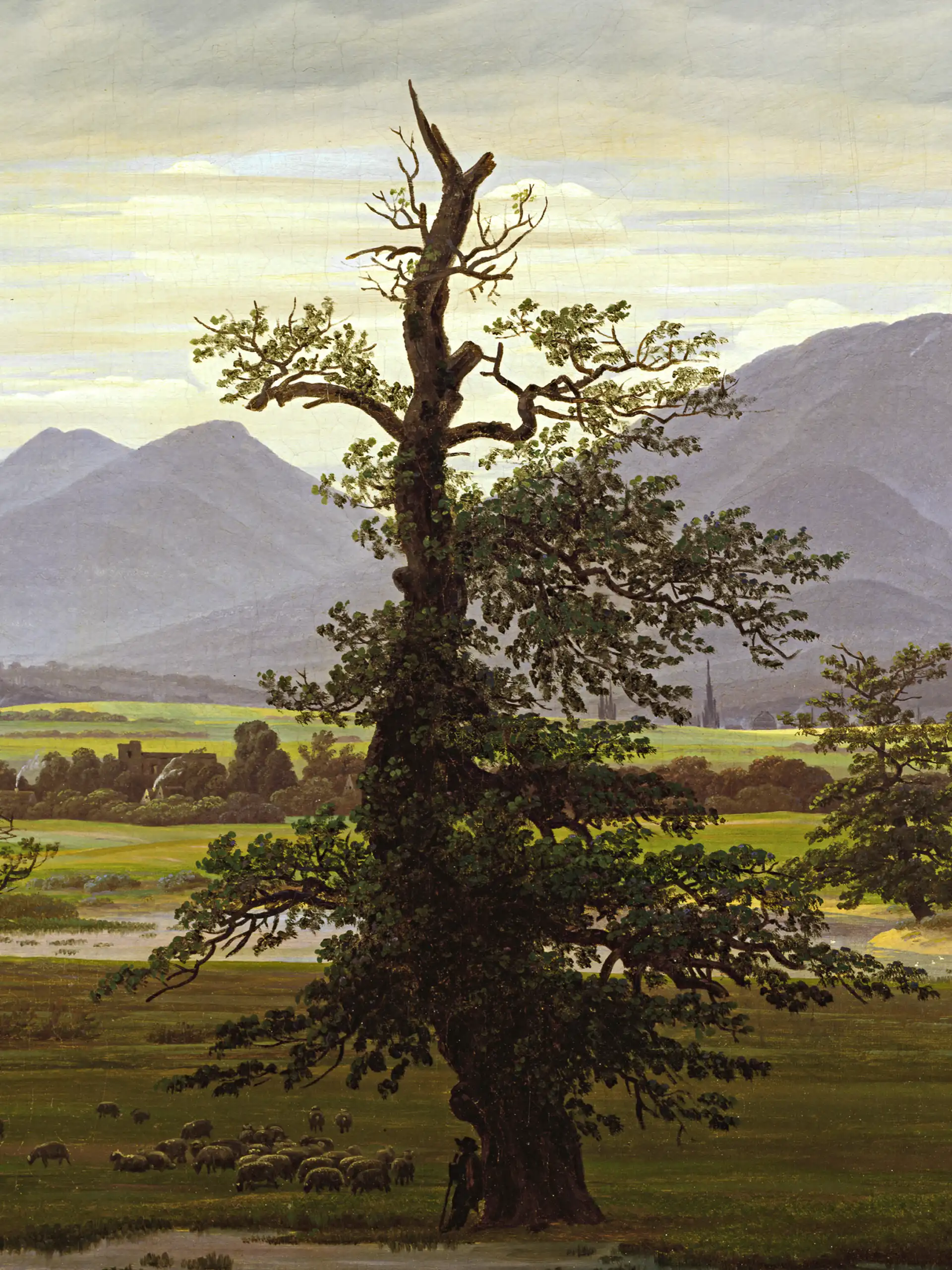
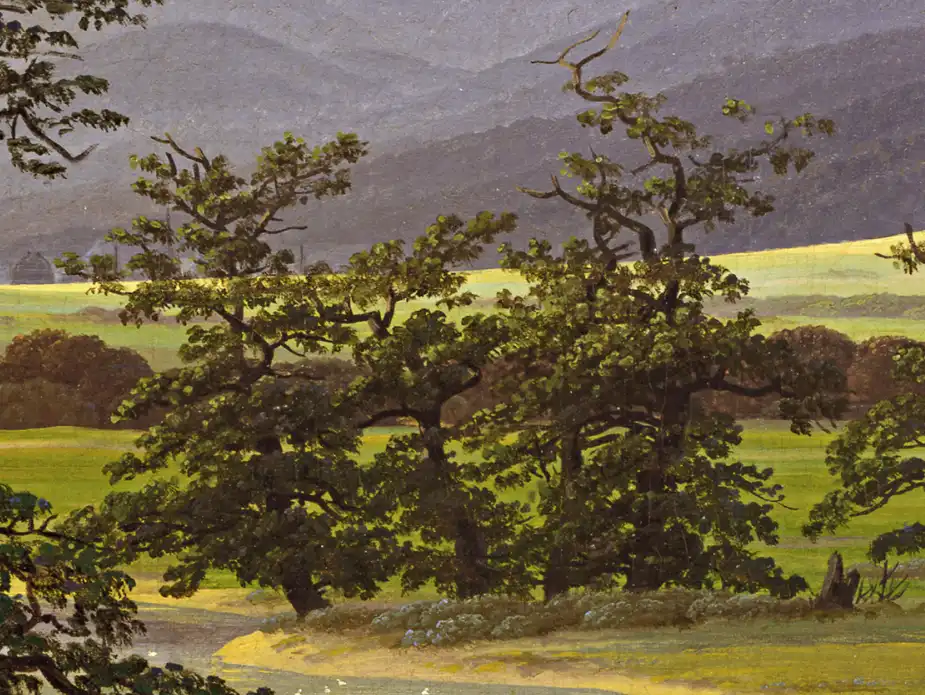

Friedrich’s habit of executing drawings directly from nature prompted critics and curators to acclaim him as a precursor of plein air painting. This process, in which artists paint outdoors (French: en plein air), emerged in England and France during the mid-19th century. It particularly influenced Impressionism.
As a predominantly French art movement, Impressionism initially had a hard time in the late 19th century Germany – the Franco-Prussian War of 1870/71 was probably still resonating. Hugo von Tschudi, director of the Nationalgalerie, made it his mission that this modern style of painting would gain critical acceptance in Germany as well. At the same time, he sought to justify his acquisition policy, which no longer primarily limited itself to German art, but more widely to European art production as a whole.
The curator Hugo von Tschudi, director of Berlin’s Nationalgalerie, wrote in the exhibition catalogue:
“One of the earliest manifestations of a modern landscape sensibility […] was aspired to by […] [C]aspar David Friedrich.”
3 Friedrich the Modernist II Light and Color
In the accompanying exhibition catalogue, Julius Meier-Graefe composed a brief text for each exhibited work. For the color scheme of The Solitary Tree, he found these eloquent words:
“In the foreground, shadowed green with a bluish, shimmering, slightly pink-tinged pond. In the middle ground, the green is brightened with yellow. Grayish-blue mountains. The sky begins with barely perceptible pale blue, which vanishes behind delicate rose-colored clouds. The clouds are darkened above
almost approaching the tonality of the mountains.”
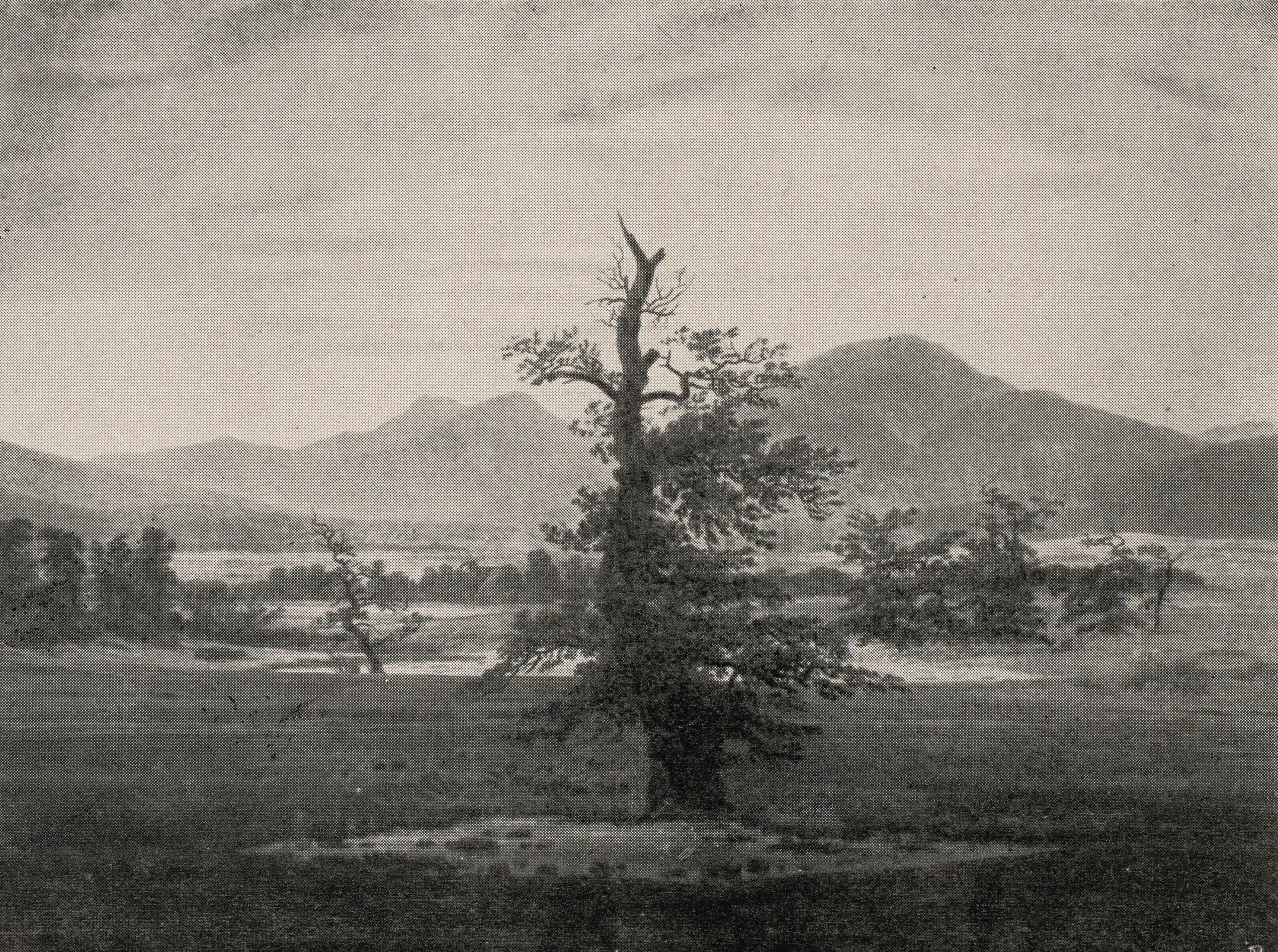

Juxtaposition of a digital image of the painting The Solitary Tree and a black-and-white illustration from the original exhibition catalogue of 1906 (Repro photo: Christoph Irrgang)
Art critics too emphasized the special quality of light and color in Friedrich’s paintings. In 1906, one critic wrote enthusiastically about The Solitary Tree (then still under the title Harz Landscape):
“The Harz Landscape in the Nationalgalerie, with an oak tree set before a pond in the foreground, and the sun already setting behind the elongated ridge of mountains, is completely filled by the luscious transitions of the bluish shadows of the atmosphere.”
4 Breaking Open the Canon The German Centenary Exhibition in the Nationalgalerie
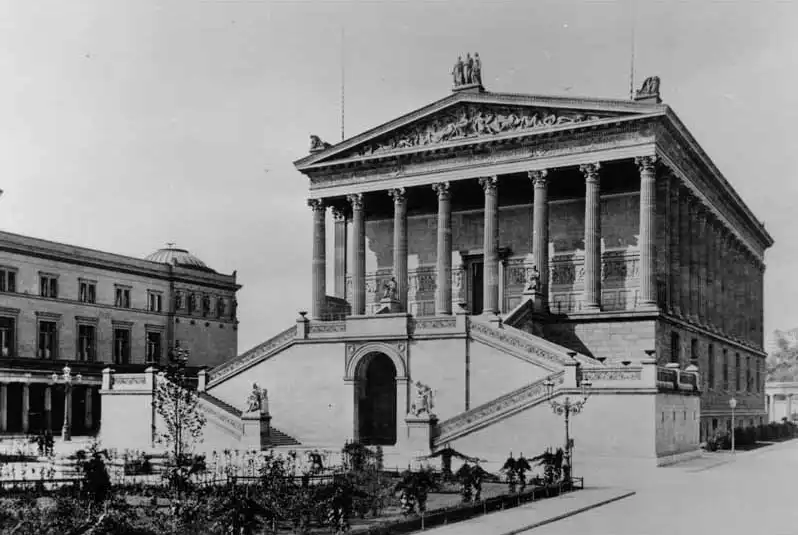
Nationalgalerie, Berlin, view from the east, with the Neues Museum on the left, image from 1881
At the German Centenary Exhibition in 1906, Caspar David Friedrich was rediscovered. Many of his works were still in the possession of his family at that point. Others were found in private collections. Very few of his pictures were publicly accessible in museum collections.
Among these was the pair of pictures The Solitary Tree and Moonrise over the Sea, both in the Nationalgalerie in Berlin.
Their acquisition was owed to the Berlin banker and collector Joachim H.W. Wagener. In his will, dated 1861, he inherited his art collection to the Prussian King – on the condition that the latter established a national gallery of art. As a consequence, the Wagener Collection – including Caspar David Friedrich’s The Solitary Tree – became the keystone of today’s Alte Nationalgalerie in Berlin.
The idea behind the museum’s founding was itself very much in the spirit of the modern age: when it opened in 1876, the Nationalgalerie became the first museum for contemporary art on a national level – a nation that now included the unified Germany, not just the state of Prussia.
As part of Wagener’s collection, Friedrich’s pair of pictures was accessioned by the Nationalgalerie, and has been on permanent display there since 1876.
In the catalogue to the German Centenary Exhibition, we read:
“The Nationalgalerie has two pictures [by Friedrich] in its original collection and a third was purchased a few years ago, and the [Hamburger] Kunsthalle has also recently acquired several works by him; while another picture, among his most beautiful, has long been on view in the Weimar Museum. But they speak such a quiet language that the hurried gallery museum public would simply dash past them quite heedlessly.”
– Hugo von Tschudi, in: exh. cat. Nationalgalerie, Berlin 1906, vol. 1, p. XXVIf.
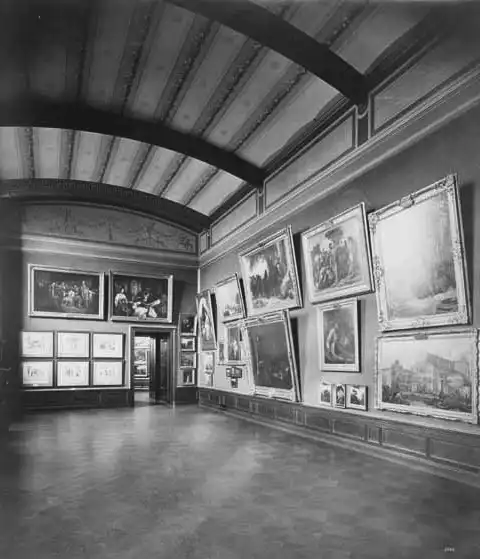
View of the exhibition in the Nationalgalerie, western gallery with works from the Wagener Collection, image from 1879
Groundbreakingly modern: the concept behind the German Centenary Exhibition
Modeled on major crowd-pulling fairs and exhibitions in the French capital, the Berlin exhibition was designed to provide an overview of 100 years of art in Germany. Especially artists who diverged from academic taste, or who were less successful or less familiar, were brought now to the public’s attention.
The period 1775–1875 must have been chosen quite consciously in order to avoid offending the establishment of the Berlin art scene around 1900.
The exhibition was curated – not without complications – by Hugo von Tschudi, director of the Nationalgalerie Berlin, Alfred Lichtwark, director of the Hamburger Kunsthalle, and Woldemar von Seidlitz, an official advisor to the General Directorate of the Royal Collections in Dresden. Contributing as well was Julius Meier-Graefe, a prominent writer on art.
As a counterpole to the still dominant model of history painting, with its emphasis on thematic content, the curators, with their selection of works, proposed a different interpretation of art history. They searched through a century of German art for developments in art according to painterly criteria such as surface, color, and light.
5 Caspar David Friedrich at the German Centenary Exhibition of 1906 The Sensation of the Century
The great discovery of the exhibition was Caspar David Friedrich. Presented were altogether 93 of his paintings and drawings. The 36 paintings hung in two cabinets on the second story of the Nationalgalerie, with 57 drawings displayed in the galleries of the Neues Museum nearby.

Floor plan of the Nationalgalerie with the spatial plan of the German Centenary Exhibition 1906
The curators Lichtwark and Tschudi first became aware of Friedrich through the Norwegian art historian Andreas Aubert. He was the first to publish material on Friedrich in 1893, the chapter on Friedrich only appeared in German in 1895.
Originally, Aubert was researching the (now lesser-known) Norwegian landscape painter Johann Christian Clausen Dahl and it was through him that Aubert first stumbled on the paintings of Friedrich. The two artists lived for many years in the same house in Dresden, and were close friends.
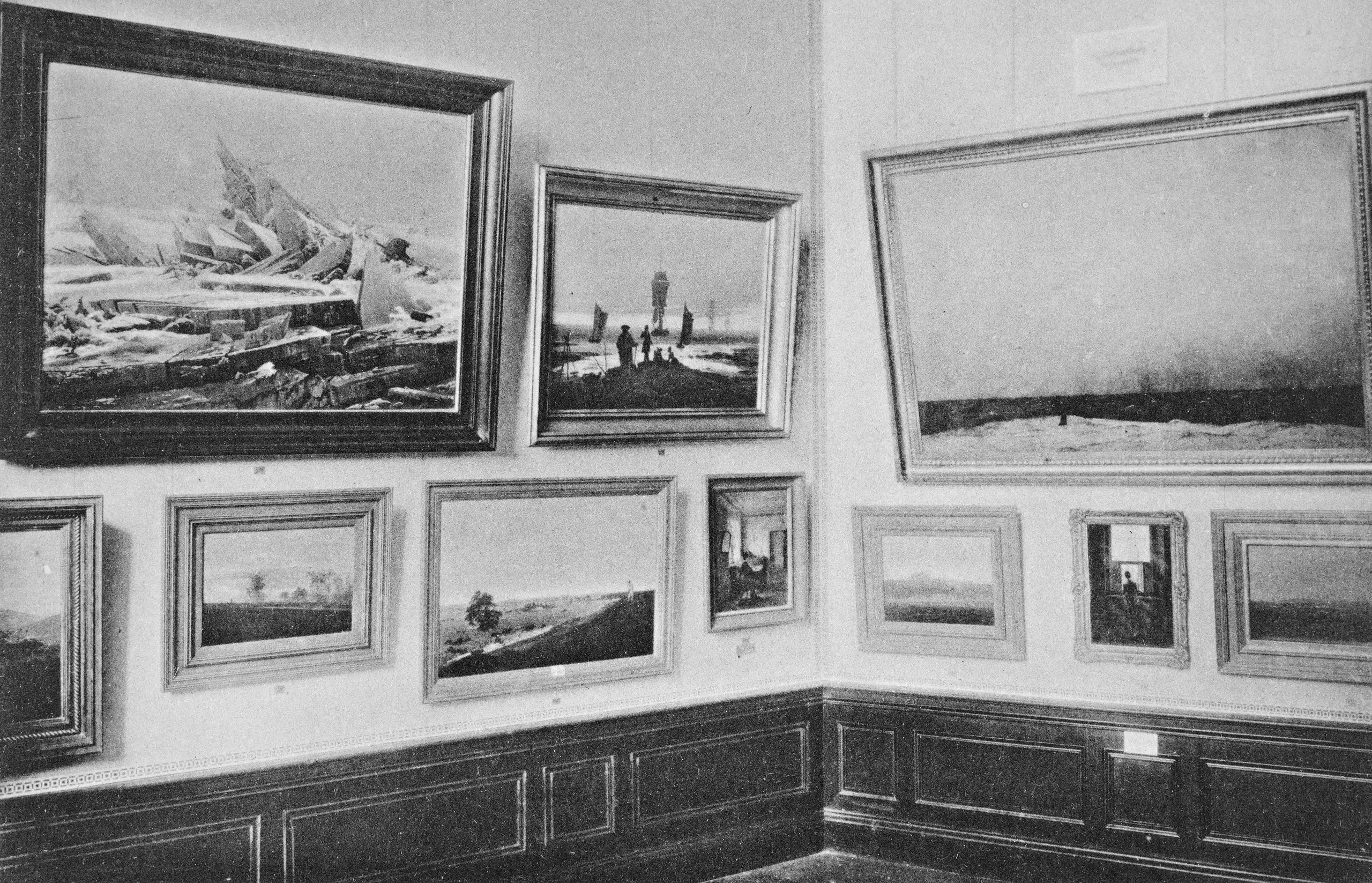
Peter Behrens, exhibition architecture for the German Centenary Exhibition of 1906: second story, Caspar David Friedrich gallery.
Revolutionary as well was the style of presentation: the pictures were hung in just two rows, one above the other, on white backgrounds. Was this perhaps the birth of the so-called white cube?!
In a letter, Alfred Lichtwark, director of the Hamburger Kunsthalle, characterizes the enormous impact of Friedrich’s pictures on 20th-century viewers:
“The Friedrich gallery will probably be the most striking one in the exhibition, and our [Hamburg] group, as far as I can see, will have the most powerful sound.”
The Hamburger Kunsthalle sent The Sea of Ice, Mountain Landscape in Bohemia, Neubrandenburg in Flames, Ploughed Field, and Meadows near Greifswald to Berlin as loans for the exhibition.
6 The Power of Exhibitions Who Defines the Canon?
Numerous art critics celebrated the rediscovered artists. Some, meanwhile, sharply criticized the curatorial concept (anonymously):
“[T]he great mistake committed by the guiding organizers of the exhibition […] was to make a selection based solely on personal taste – that cannot be made up for in life.”
That said, however, the same challenge preoccupies curators and collectors even today. Now as ever, one criterion for a purchase or an exhibition is the question: How “modern”, how contemporary is a given work of art? And what does it tell us about ourselves today?
The internet and social media are further expanding the established canon, giving a hearing to unheard voices, enabling alternative views – and influencing our perspectives of what art can be.

With the Centenary Exhibition of German Art, the curators achieved their goal: to reexamine a century of German art with impulses from contemporary art – Impressionism in particular – and to break up the art canon of their time with the positions presented. These sensational discoveries from an earlier era have long since become part of the Western museum canon – not just in Germany. The pictorial worlds of the once forgotten Caspar David Friedrich are now world-famous.
Who knows how popular Friedrich’s landscapes would be today
without the German Centenary Exhibition of 1906?
